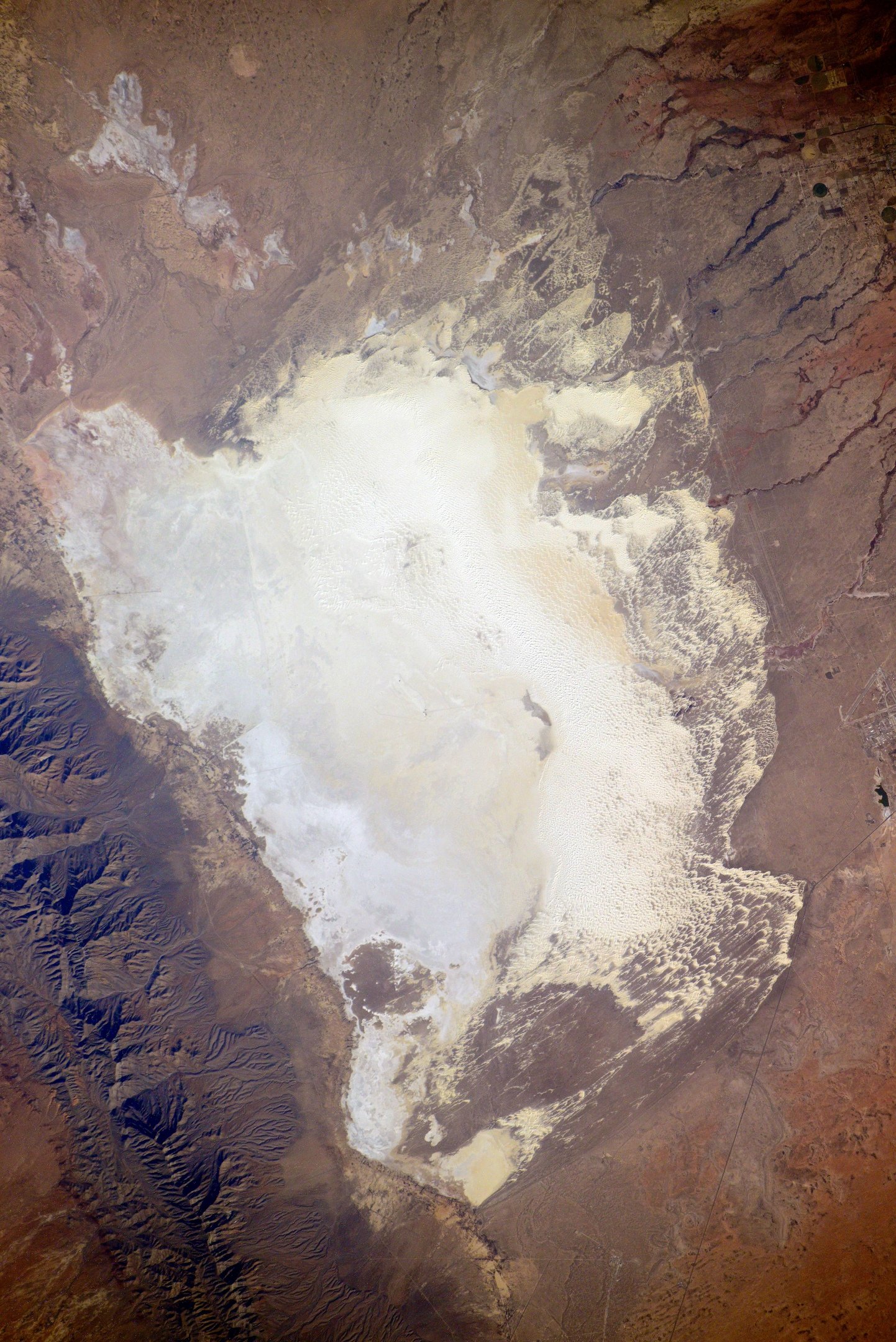Astronaut Sergey Kud-Sverchkov captured from ISS White Sands National Park, U.S.

White Sands National Park is a national park located in New Mexico and completely surrounded by the White Sands Missile Range. The park covers 589.9km2 in the Tularosa Basin, including the southern 41% of a field of white sand dunes composed of gypsum crystals. This gypsum dunefield is the largest of its kind on Earth, with a depth of about 9.1m, dunes as tall as 18m, and about 4.1 billion metric tons of gypsum sand. Approximately 12,000 years ago, the land within the Tularosa Basin featured large lakes, streams, grasslands, and Ice Age mammals. As the climate warmed, rain and snowmelt dissolved gypsum from the surrounding mountains and carried it into the basin. Further warming and drying caused the lakes to evaporate and form selenite crystals. Strong winds then broke up crystals and transported them eastward. A similar process continues to produce gypsum sand today.
The local scenery on the ground is as follows.

Reference: Sergey Kud-Sverchkov’s Tweet
See earthview photo gallery: LiVEARTH